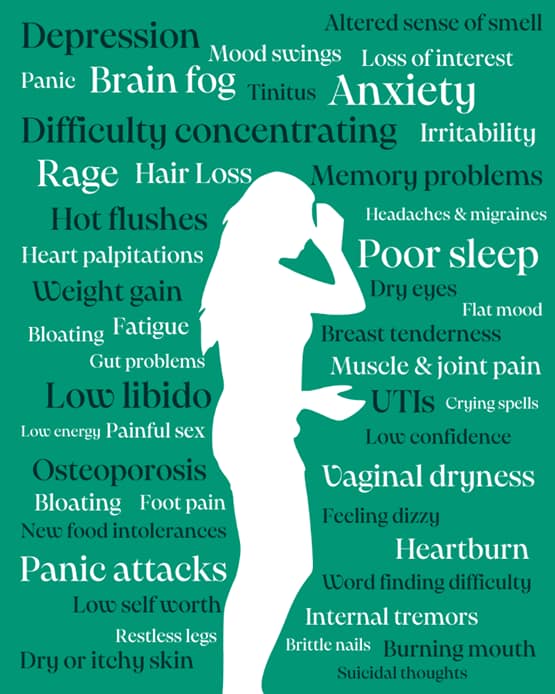
How to manage ADHD in the classroom? Do as science suggests!
Briefly think back to when you were in elementary school. Do you remember that one classmate who was often off-task, restless, and clowning around? Or that dreamy classmate who appeared to be in his/her own world, stare in space during class, and not notice being called on by the teacher to answer a question? Despite the different characteristics of these children, both present in hindsight with symptoms of Attention Deficit Hyperactivity Disorder (ADHD).
“On average, every elementary school class contains one child with ADHD.”
These children often show behavior problems and have difficulties progressing with their schoolwork, which often results in underachievement (Loe & Feldman, 2007). This not only leads to poor academic outcome for students but also leads to stress in teachers, as teachers often do not have the necessary skills to deal with the behavior problems of these children.
Nowadays, the common solution is to treat children with ADHD with stimulant medication. Sometimes this leads to painful dilemmas for parents, e.g. when schools ask parents to start pharmacological treatment of their children. A recent meta-analysis* indicates that medication has positive effects on the behavior of children with ADHD in the classroom, with improvements in the amount of schoolwork completed (productivity) and on-task behavior by up to 15% (Prasad et al., 2013). However, effects on the accuracy of the schoolwork are not that convincing; some studies show no benefit at all even though others do show an improvement, particularly on arithmetic. One possible explanation for this inconsistency is that higher doses of medication are necessary for optimal behavioral effects (e.g. increased productivity and on-task behavior) while only lower doses show optimal cognitive effects (e.g. improved accuracy; see for a review: Berridge & Devilbiss, 2011). Another explanation, previously argued by Professor Oliver Tucha on Mindwise (http://mindwise-groningen.nl/treating-adhd-effectively-do-we-miss-our-opportunities/), is that children with ADHD who started their medication ‘just do not know what to do with their improved functions’. They actually have to be given the chance to catch up with the material, skills and learning strategies that they missed in the past because of their untreated symptoms. The use of effective psychosocial strategies is therefore as important as medication for managing ADHD in the classroom. The best long-term outcomes (particularly for academic, self-esteem, and social function outcomes) for children with ADHD have been obtained by the combination of medication and psychosocial strategies (meta-analysis: Arnold et al., 2015).
“Many advanced psychosocial strategies exist that teachers can apply in the classroom to improve the behavior of children with ADHD.”
Particularly consequence-based strategies are effective, as my colleagues and I concluded in our recent meta-analysis (Gaastra et al., 2016). These strategies make use of frequent and immediate rewards for ‘good’ behavior (including praise), and mild punishment of ‘bad’ behavior (including reprimanding). These interventions may be individually targeted to children with ADHD but can also be used in a class-wide setting to benefit the classmates as well. For example, a group competition can be held in which groups of students compete for a reward/privilege by showing ‘good’ behavior as a group. In practice this could mean that the children of each group earn ‘smileys’ for ‘good’ but not for ‘bad’ behavior, and that the winning group with the most smileys earns a privilege, e.g. to pick the video that will be watched on Friday afternoon. Based on our meta-analysis, also strategies for the self-monitoring of ‘good’ behavior appeared to be particularly effective for children with ADHD. With this strategy, the child is instructed to observe his/her own behavior while performing an academic assignment. At prompted times he/she notes on a special recording sheet to what extent the ‘good’ behavior was met in the past minutes. This trains the child’s capacity to self-monitor his/her behavior. The mentioned strategies have been shown to be effective in children with ADHD regardless of whether they use medication.
“However, a practical difficulty with the described behavioral techniques is that their success depends on the definition of what ‘good’ and ‘bad’ behavior is for a specific child in a specific context.”
For example, ‘to sit quietly’ or ‘to stop fidgeting’ would not be useful definitions of ‘good’ behavior as no child would be able to do this all the time. Moreover, the definition should specify an active behavior that could substitute the ‘bad’ behavior. ‘Working on the assignment’ or ‘Finishing the assignment’ would for example be a better definition of ‘good’ behavior, which could be further specified for a particular child and assignment. Teachers, who have not been trained in this, may need to work with a behavior specialist, such as psychologists, to teach them how to analyze and define ‘bad’ and ‘good’ behavior of children. This is where behavior specialists may work together with teachers in developing classroom interventions to support children with ADHD.
“In this collaboration teachers are the experts of the curriculum and the class, whereas the behavior specialists have advanced (scientific) knowledge of effective classroom interventions and how to implement them successfully.”
Many advanced classroom interventions for children with ADHD are available for use by teachers; many more than described in this blog post (see our meta-analysis: Gaastra et al., 2016). Some may be used in a class-wide setting and also have direct positive effects on classmates. Individualized strategies for children with ADHD appeared to also have a positive influence on classmates, possibly because of a better learning climate. When teachers are empowered with the right tools and help from behavior specialists, this may lead to a better outcome for ‘that one student who is often off-task, restless, and clowning around’, or ‘that dreamy student who appears to be in his/her own world’, as well as for their teachers and their classmates.
*Meta-analysis is a special method of performing a literature review; it quantifies the effects of different studies (e.g. group differences or treatment effects) and computes the overall effect (and diversity) across studies.
Relevant articles
Arnold, L.E., Hodgkins, P., Caci, H., Kahle, J., & Young, S. (2015). Effect of Treatment Modality on Long-Term Outcomes in Attention-Deficit/ Hyperactivity Disorder: A Systematic Review. PLoS ONE, 10(2), e0116407. doi:10.1371/journal. pone.0116407
Berridge, C.W., & Devilbiss, D.M. (2011). Psychostimulants as Cognitive Enhancers: The Prefrontal Cortex, Catecholamines, and Attention-Deficit/Hyperactivity Disorder. Biological Psychiatry, 69, e101–e111. doi:10.1016/j.biopsych.2010.06.023
Gaastra, G.F., Groen, Y., Tucha, L., Tucha, O. (2016). The Effects of Classroom Interventions on Off-Task and Disruptive Classroom Behavior in Childrenwith Symptoms of Attention-Deficit/HyperactivityDisorder: A Meta-Analytic Review. PLoS ONE, 11(2), e0148841. doi:10.1371/journal.pone.0148841
Loe, I. M., & Feldman, H. M. (2007). Academic and educational outcomes of children with ADHD. Journal of Pediatric Psychology, 32(6), 643-654. doi: 10.1093/jpepsy/jsl054
Prasad, V,. Brogan, E., Mulvaney, C., Grainge, M., Stanton, W., & Sayal, K. (2013). How effective are drug treatments for children with ADHD at improving on-task behaviour and academic achievement in the school classroom? A systematic review and meta-analysis. Eur Child Adolesc Psychiatry, 22, 203–216. doi:10.1007/s00787-012-0346-x
Tucha, O. (26 November, 2014). Treating ADHD effectively – Do we miss our opportunities? Retrieved from: http://mindwise-groningen.nl/treating-adhd-effectively-do-we-miss-our-opportunities/
NOTE: Image by CameliaTWU, licenced under CC BY 2.0.



